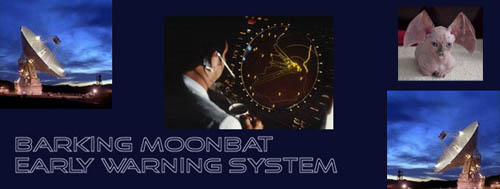
Arbor Assassin Acquitted
Ludicrous, from beginning to end. Simply ludicrous!
Moonbats really should be made of sterner stuff.

Poison is just too slow…
USE A CHAINSAW NEXT TIME !!!!!!!!!!!!!!!!!!!!!
and let’s get the bear-taser patrol out there to zap some of these tree-huggers…
I hope the letter of apology was written on recycled paper.
I cast my lot with OCM on this one. I have no patience with greenie tree huggers, but their activities have to do with interfering with legal commerce, whereas this selfish bitch took something that did not belong to her. If those trees had any size, and since they were blocking a third floor apartment view they probably were big, then she should be liable for substantial damages. $5,000 might not cover it. If that was an American chestnut, it alone was worth that. How will she give the community the eighty years it takes to regrow a tree that big?
Ironic that she had to travel to the US to get poison which proves that the US is a leader in producing WMD! I just hope that they salavaged the wood.
Posted by yatalli 01/06/2006 at 06:11 PM
01/06/2006 at 06:11 PM
I agree with Dick, particularly about the American chestnut. That strikes a sore spot with me.
I am old enough to remember the remains of the chestnut forests in Appalachia after the blight came through. My parents in western North Carolina gathered their last native chestnuts in 1925, when the blight came through there, and the last of the trees in the Appalachians were gone by 1950. As I was coming up, the fallen trees had largely been hauled out to make “wormy chestnut” for interior paneling. There were left only the stumps, rotting, hollowed, tumbling down, studding the forest wherever one walked.
For years thereafter the root systems of the trees remained alive, and shoots of chestnut trees kept trying to come back. Occasionally a sapling here or there would reach some size, and maybe even bear a meager crop of nuts. But then the blight would strike, and the trees would die. To this day, in some sections, the trees are still trying to come back, but that cannot go on forever.
For those who don’t recall or never heard of the chestnut blight, it is caused by a bark canker, a fungus native to Asia. It was brought to this country in the early 1900’s aboard samples of Asian chestnuts, which had some immunity to the blight. The American chestnut tree (Castanea dentata), however, had no immunity whatever.
The blight was first spotted in botanical gardens in New York City in 1904. By the time anyone realized what was happening, it was raging north and south along the Appalachians, covering as much as fifty miles a year, spread by insects, birds and winds. At that time, millions of chestnuts graced the mountains, offering food for a host of wild creatures and the best wood available to builders. In spring, their blooms would turn the mountainsides white.
But by 1950, when the blight reached the southern limits of the tree’s natural range, all but a handful of these trees were gone--the victims of a fungus, loosed by ignorance and by someone’s desire for a little exotic beauty in the gardens.
There were plantings of these trees outside their natural range, particularly in northwestern Pacific areas, and as I understand it, some of these plantings at least have remained out of reach of the blight. So I have no doubt, Dick, that the tree in Vancouver was a genuine American chestnut.
I may have sounded flippant in my first entry on this thread, but this hurts.

Tannenberg, I too remember seeing a chestnut here and there in suburban neighborhoods when I was a kid (40’s - 50’s). I had forgotten the blossoms until you reminded me. Even a single tree was glorious; a whole forest must have been spectacular. They and the American elm were fabulous trees, and their passing is a huge loss.